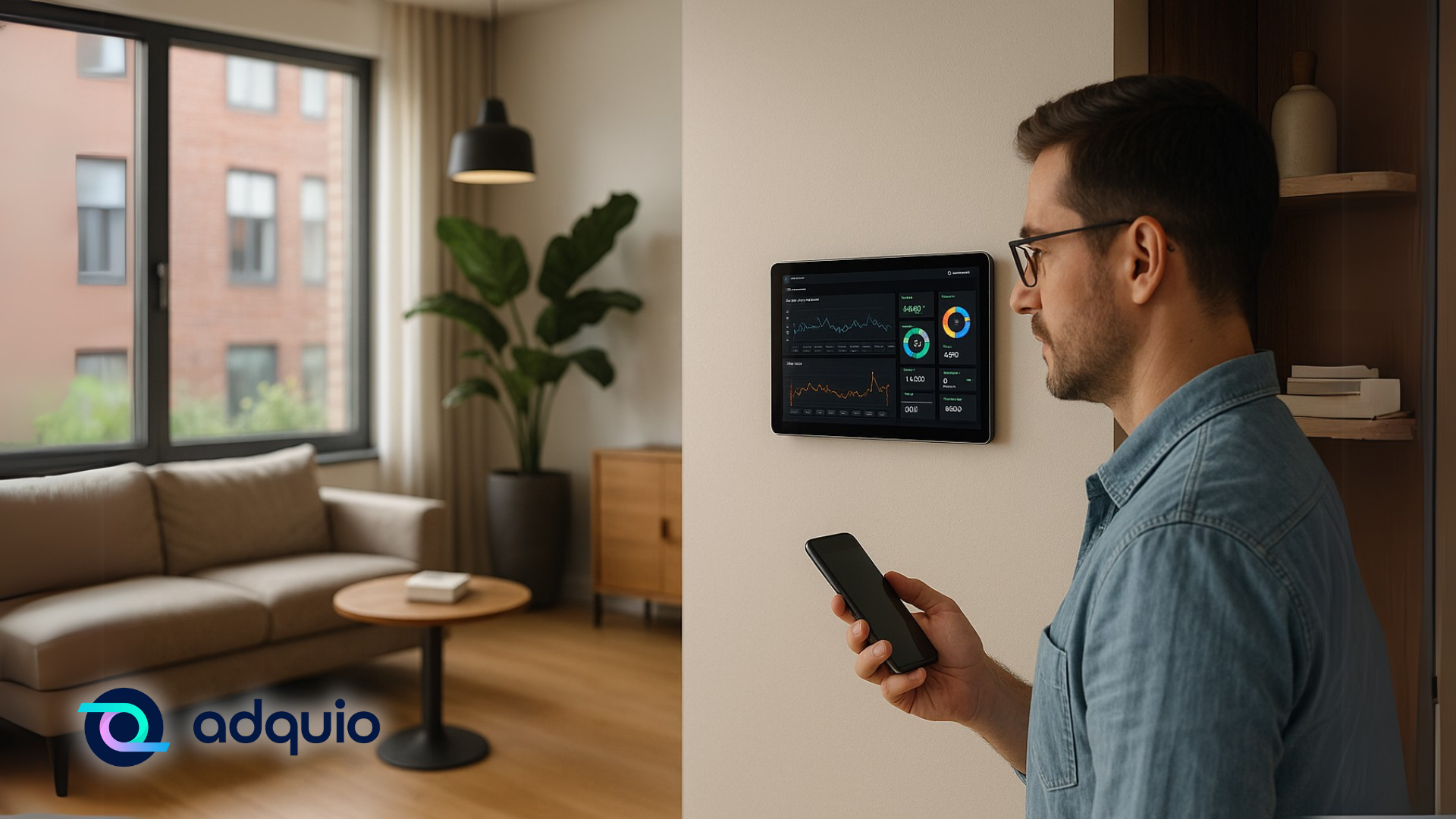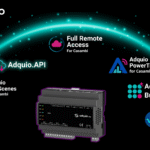
1. Introduction:
After the success of ourwhite paper on Casambi-Adquio integrations Indoors, we now focus on outdoor installations, specifically public lighting. We highlight the particularities of this environment and how the combination of Casambi and Adquio provides advanced and efficient solutions.
2. Choice of Luminaires:
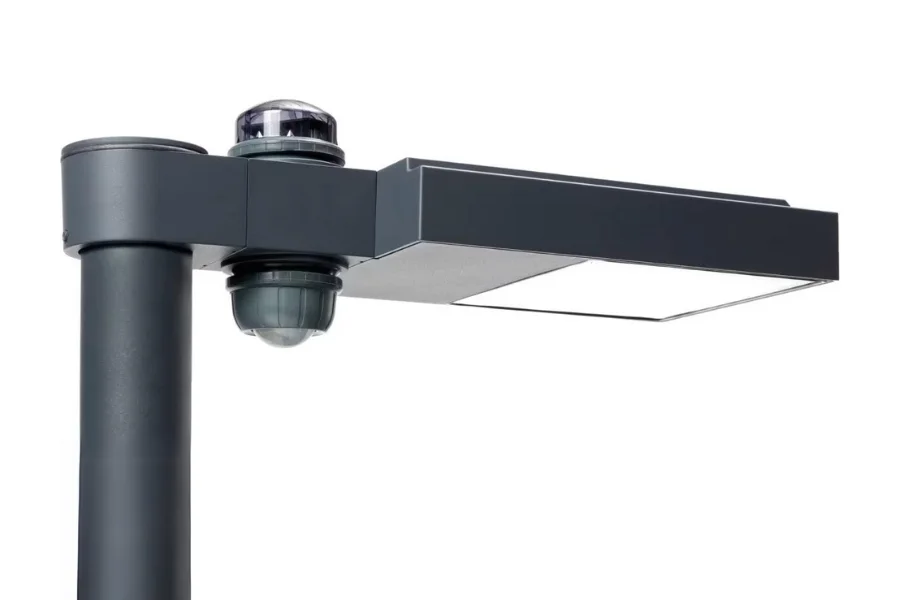
The decision on what type of luminaires to select for public lighting installations is a critical step that directly affects the effectiveness of the system. In this context, two clearly differentiated options are presented: those that already incorporate Casambi integrated from their manufacturing and those that allow the subsequent integration of this technology. Both alternatives offer different advantages and, therefore, the choice depends on specific factors of each project.
Luminaires that have factory-integrated Casambi stand out for their simplicity of installation and configuration. This “out of the box” approach simplifies the process as these luminaires are equipped with the necessary hardware and are ready to connect to the Casambi network without the need for additional modifications. This type of solution is especially effective in projects that seek a quick and hassle-free implementation.
On the other hand, luminaires that do not include Casambi as standard, but allow for later integration, provide additional flexibility. This approach is ideal for projects updating or improving existing systems. The ability to add Casambi to already installed luminaires extends the useful life of the latter and facilitates the transition to a more advanced management system.
Both options allow remote management of the luminaires, offering full control over intensity and on and off. This versatility contributes to energy efficiency and the ability to adapt to the specific needs of each public lighting project.
3. Casambi Communications Chips:
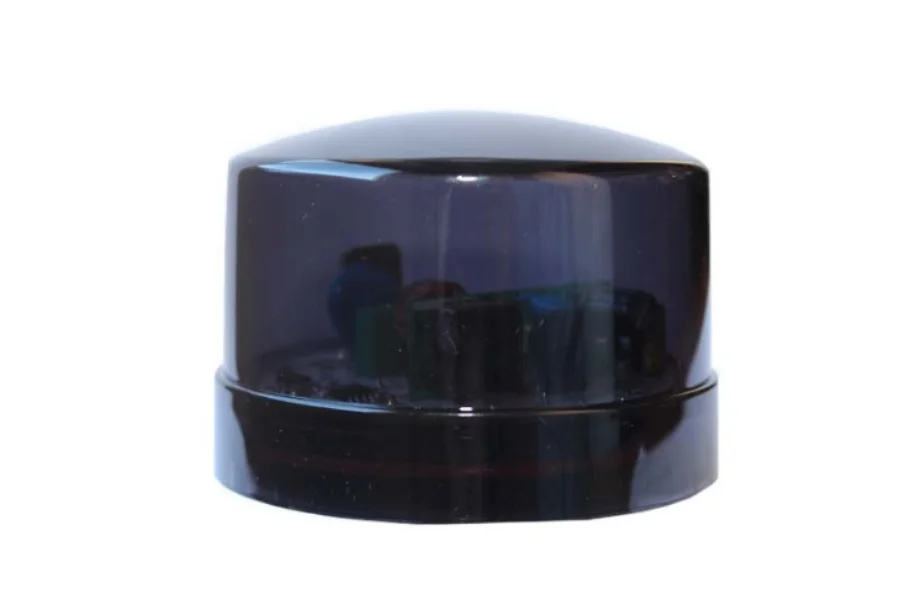
Within the technological heart of the Casambi integration are the communications chips, the base component, that allow wireless connectivity and intelligent management of the luminaires. Casambi offers two different versions of these chips: the ‘traditional’ nRF52832 and the ‘Long Range’ nRF52840. These chips, manufactured by Nordic Semiconductor, are essential to boost Casambi’s capabilities in public lighting environments.
‘Traditional’ chips have been widely used and tested in various Casambi applications. They provide robust and reliable connectivity, allowing efficient communication between the luminaires and the Casambi network. However, technological evolution has introduced ‘Long Range’ chips, an advanced option that offers even greater range and optimized performance. The latter have been designed to face specific challenges of outdoor installations, offering an ideal solution for public lighting networks.
The integration of these chips is materialized in the CAS-24V-ZHAGA-4P-80-DA device, developed and distributed by OLFER in Spain. This device, created for easy integration, stands out for its resistance to ultraviolet radiation, its IP66 rating that guarantees protection against adverse weather conditions, and its ZHAGA Book 18 connector, which facilitates the standardized connection of components.
The latest version of the ‘Long Range’ chips has demonstrated a proven range of over 200 meters between direct-view nodes. This achievement is crucial in the context of public lighting, where the separation between luminaires rarely exceeds 200 meters. Additionally, the mesh feature of Casambi nodes, where each node functions as a repeater, ensures efficient transmission of messages between luminaires, even in dense urban settings.
4. Public Lighting with Casambi:
The application of Casambi in public lighting environments represents a significant milestone in advanced lighting management. The distinctive characteristic of Casambi networks, the ability to operate in a mesh topology, is revealed as a relevant factor in the efficiency and reliability of these systems in public lighting contexts.
In the specific environment of public lighting, where the separation between luminaires rarely exceeds 200 meters, the connectivity of Casambi nodes, with its mesh feature, is a perfect fit. Each luminaire functions as a node, and the ability to efficiently transmit messages over the network means that, even in individual failure situations, communication between luminaires remains intact. This redundant design guarantees operational continuity, essential for the safety and efficiency of public lighting installations.
It is important to note that, in the event that a luminaire fails, the Casambi controller continues to perform its function, and the network persists in its operation. The resilience demonstrated in these circumstances positions Casambi as an ideal management system for public lighting, providing exceptional security and reliability in the management of complete lighting networks.
The limited separation between luminaires, combined with the mesh capacity of the Casambi nodes, means that any message on the network can reach all luminaires with a range greater than 200 meters. This synergy between network architecture and communications chip capabilities ensures consistency in control and management, regardless of geographic distribution or environmental conditions.
This redundancy and robustness are key elements in the application of Casambi in public lighting, where operational continuity and efficient management are imperative.
5. Start-up:
The implementation of Casambi luminaires in outdoor installations presents fundamental similarities with the process used in indoor environments, but with specific considerations to adapt to the public lighting context. Once the luminaires have been physically installed and powered, the setup process is simplified through the Casambi app, which allows complete control of an entire street or common lighting area via a tablet.
It is important to remember that, in a Casambi network, the maximum limit is 250 devices, while in ‘Long Range’ networks like these, this limit is reduced to 60 devices. This distinction is essential due to the slower communication speed in ‘Long Range’ networks, which could lead to faster saturation, especially when using devices that constantly send information, such as presence/luminosity detectors or D4I devices. However, this limit can be easily overcome by implementing Adquio controllers, which allow multiple Casambi networks to be joined together as needed.
To centrally connect and control the network of Casambi outdoor luminaires, it is simply required to install an Adquio device with an internet connection and a Lithernet gateway near the luminaires. These devices are housed within watertight boxes to ensure protection against adverse weather conditions.
The implementation of these controllers allows all information from a group of luminaires to be transmitted efficiently to the SCADA control system.
6. Communication node.
As we have already mentioned before, every 60 luminaires, you will need a controller like this. It consists of a waterproof box with the following components inside.

- 4G Modem provides reliable internet connection and IP addresses to the rest of the devices. It is powered by POE from the switch.
- POE switch provides connectivity to all elements and power via POE.
- Adquio Mini, our smallest and most versatile controller. It collects all the data from the Casambi network through the Lithernet Gateway and transmits it to the main server on the Internet, Adquio SCADA Cloud. Additionally, it processes locally all the functions that we need to do on the luminaires of the network it controls
- Lithernet Gateway provides bidirectional connectivity with the Casambi network, and is also powered by POE. There can be between 1 and 3 in each box. This allows the same panel to manage up to 3 streets or areas operating on different channels.
- Temperature, humidity, and door opening contact sensor.
- 4G antenna. Provides connection to the cellular network.
- Base Schuko.
- Power supply for the POE switch.
- Differential, protection, and switch for the entire panel.
- Power terminals for the entire panel.
- Watertight electrical panel.
As you can see, each point can manage between 1 and 3 Casambi networks (on different channels), therefore, between 60 and 180 luminaires/devices.
This control center, being managed by a controller, gives you the freedom to program any type of action on your luminaires. Simultaneously, it provides a secure connection to the control center where you are using your Adquio SCADA Cloud.
7. Centralized Control with Adquio:
The centralized management of the Casambi luminaire networks becomes a reality through the strategic implementation of Adquio controllers. These devices not only serve as an essential link between luminaires distributed in the field, but also play a critical role in the efficient collection and transmission of collected data.
In the control part closest to the luminaires, we find the elements that we have just seen. These components, meticulously selected and located within watertight boxes, make up a robust system that guarantees protection against adverse weather conditions, ensuring the integrity and continuous operability of the control system.
The key function of the Adquio Mini Controllers to process the information coming from the luminaires, including data from presence/motion detectors, lighting levels and other relevant parameters. Additionally, this controller manages lighting on demand, and can even synchronize different streets with this system if necessary. Also transmit the temperature, humidity, and open panel info for security. This controller, when connected to the internet, acts as the dynamic link between the network of luminaires and the Adquio SCADA Cloud system, which resides on Adquio’s servers in the cloud.
Lithernet Gateway CBM3 Long Range It plays a crucial role in long-distance communication, facilitating data transmission between luminaires and the Adquio Mini Controller. Its optimized design guarantees the stability and transfer speed necessary for efficient management.
8. Installation Benefits:
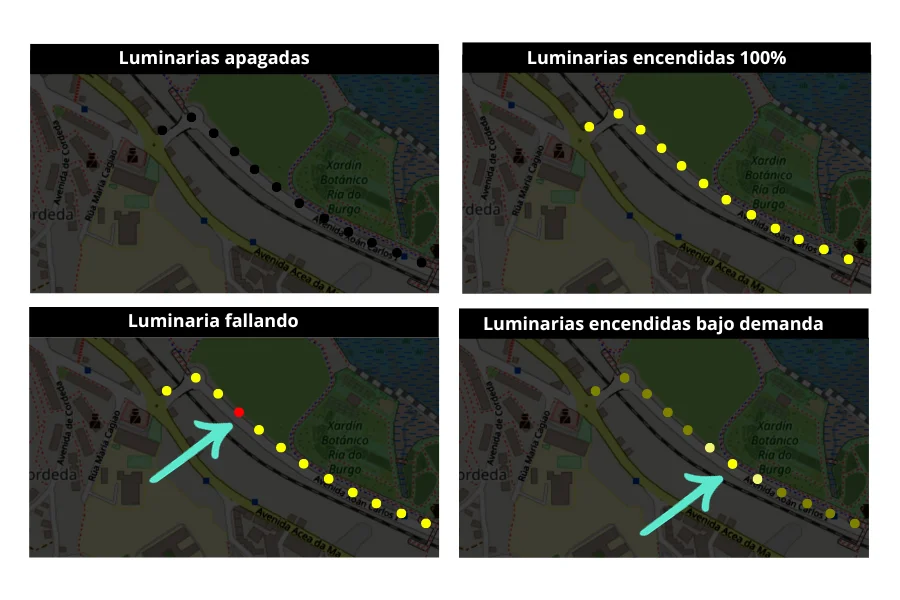
The integration of Casambi and Adquio into public lighting systems not only brings operational efficiency, but also unlocks a series of benefits that completely transform urban lighting management. These benefits span several areas, from operational flexibility to energy efficiency and real-time responsiveness.
Detailed Remote Management: The ability to remotely manage each luminaire individually or in groups provides an unprecedented level of control and adaptability. From precise adjustments in light intensity to programming personalized scenes, remote management allows lighting to be adapted to specific needs at any time.
Instant Monitoring: Real-time visualization of the status of each luminaire is a valuable tool for rapid problem detection and resolution. From driver failures to excessive power consumption, detailed monitoring provides instant and visual insight, allowing for quick and effective interventions.
Real-Time Visualization on Plane: The ability to directly access a floor plan showing the location and status of each fixture makes it easy to identify and solve problems. This intuitive visualization improves operational efficiency by providing an instant understanding of the distribution and status of luminaires in the area.
Dynamic Adjustment based on Detection: The ability to dynamically adjust brightness based on presence or motion detection not only improves energy efficiency and light pollution, but also intelligently responds to changing environmental needs. This adaptive approach ensures that lighting adjusts to the actual conditions of each road in real time.
Global Control and Remote Access:The ability to make global adjustments, maintenance or changes to all street lighting from a remote location is essential. Whether for special events, seasonal changes or simply optimizing the system, global control provides flexibility and operational efficiency.
The advanced management and benefits detailed above not only improve the overall user experience and safety in urban areas, but also generate significant financial savings over time. The ability to adjust lighting according to the real need of each moment not only optimizes energy consumption, but also prolongs the useful life of the luminaires, thus contributing to the sustainability of the system as a whole.
9. Energy Savings and Sustainability:
The combination of Casambi and Adquio not only results in improved operational efficiency, but also drives substantial energy savings and contributes significantly to environmental sustainability. This section will delve into how these advanced technologies collaborate to optimize energy consumption and create more sustainable environments.
Adquio controllers are not limited to simply managing information from presence/motion detectors, but play a key role in implementing intelligent strategies to reduce energy consumption. The ability to dynamically adjust brightness based on presence or motion detection not only improves energy efficiency and light pollution, but also allows for more precise and sustainable use of resources.
Let’s imagine a scenario in which the luminaires respond instantly to the presence of people, adjusting their light intensity to adapt to the need of the moment. When activity decreases, the luminaires automatically dim their brightness, ensuring adequate lighting without wasting unnecessary energy. This smart approach not only reduces long-term operating costs, but also contributes to resource conservation, reduced nighttime lighting pollution, and reduced carbon footprint.
The Adquio SCADA Cloud system, receiving data from various controllers in dispersed locations, is governed as a key component for the sustainability of the entire system. The ability to manage multiple Casambi networks from a centralized location not only optimizes operational efficiency, but also simplifies the implementation of global energy saving strategies.
The energy savings generated by the implementation of Casambi and Adquio not only benefit cities from an economic and environmental perspective, but also highlight how technology can be a powerful ally in the search for sustainable solutions. This proactive approach to energy management not only meets environmental standards, but also positions cities at the forefront of sustainable technological innovation.
10. Conclusion:
The convergence of Casambi and Adquio in outdoor public lighting installations marks a milestone in the intelligent and sustainable management of urban lighting. From the careful selection of luminaires to the implementation of advanced energy-saving strategies, these technologies offer comprehensive solutions that transform the urban lighting experience.
Casambi’s ability to offer detailed remote control and seamless integration with existing luminaires combines harmoniously with the Adquio controllers, which act as the backbone of the operation.
The substantial energy savings and environmental benefits derived from these implementations not only highlight operational efficiency, but also reinforce the positive contribution to global sustainability. The ability to dynamically adjust lighting according to actual demand, combined with instant monitoring and centralized management, positions Casambi and Adquio as technological pillars in the evolution of smart cities.
As these technologies continue to evolve and be implemented around the world, a future is anticipated where public lighting will not only provide clear and safe vision, but will also become an essential component for urban efficiency and sustainability.


